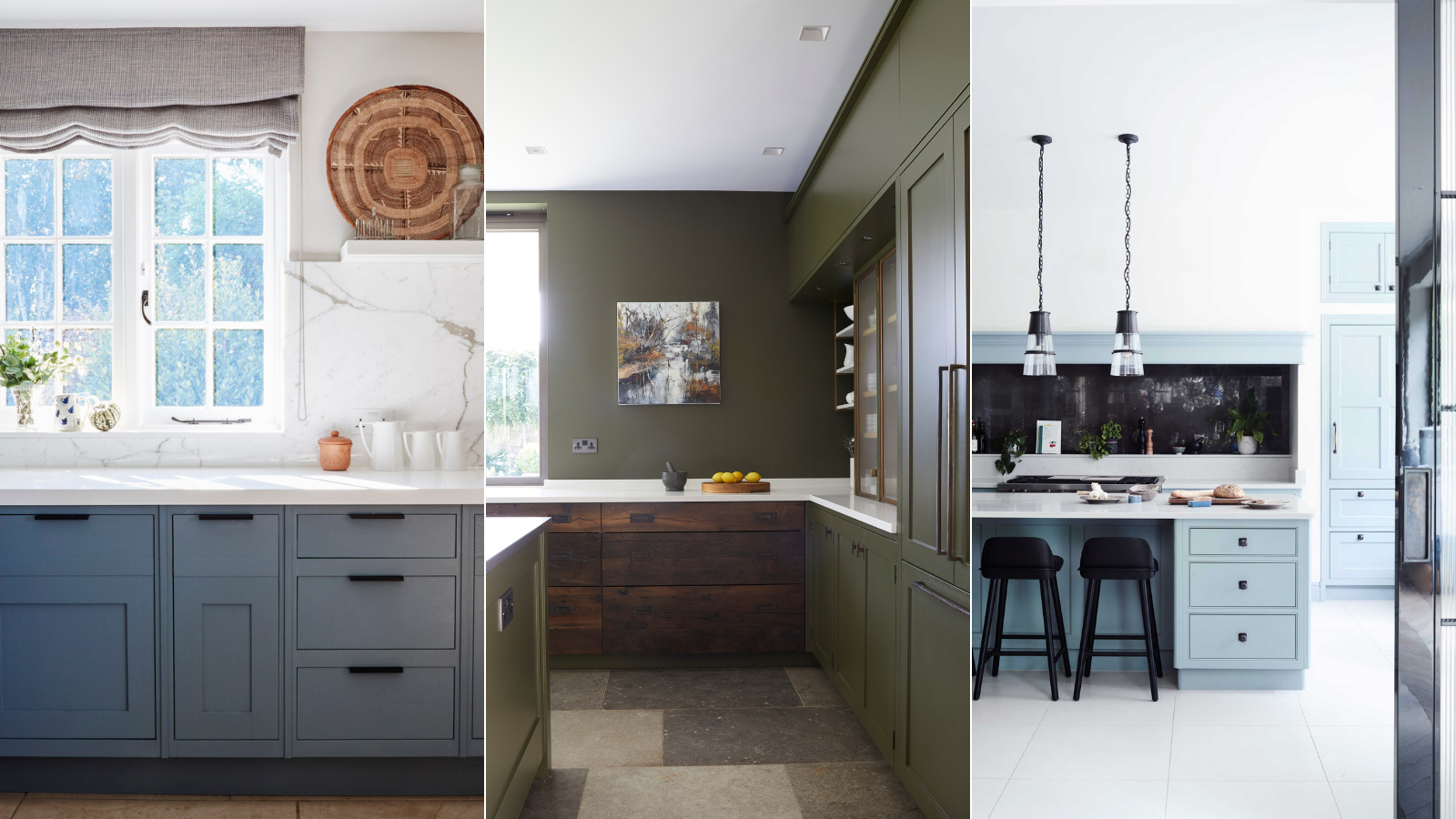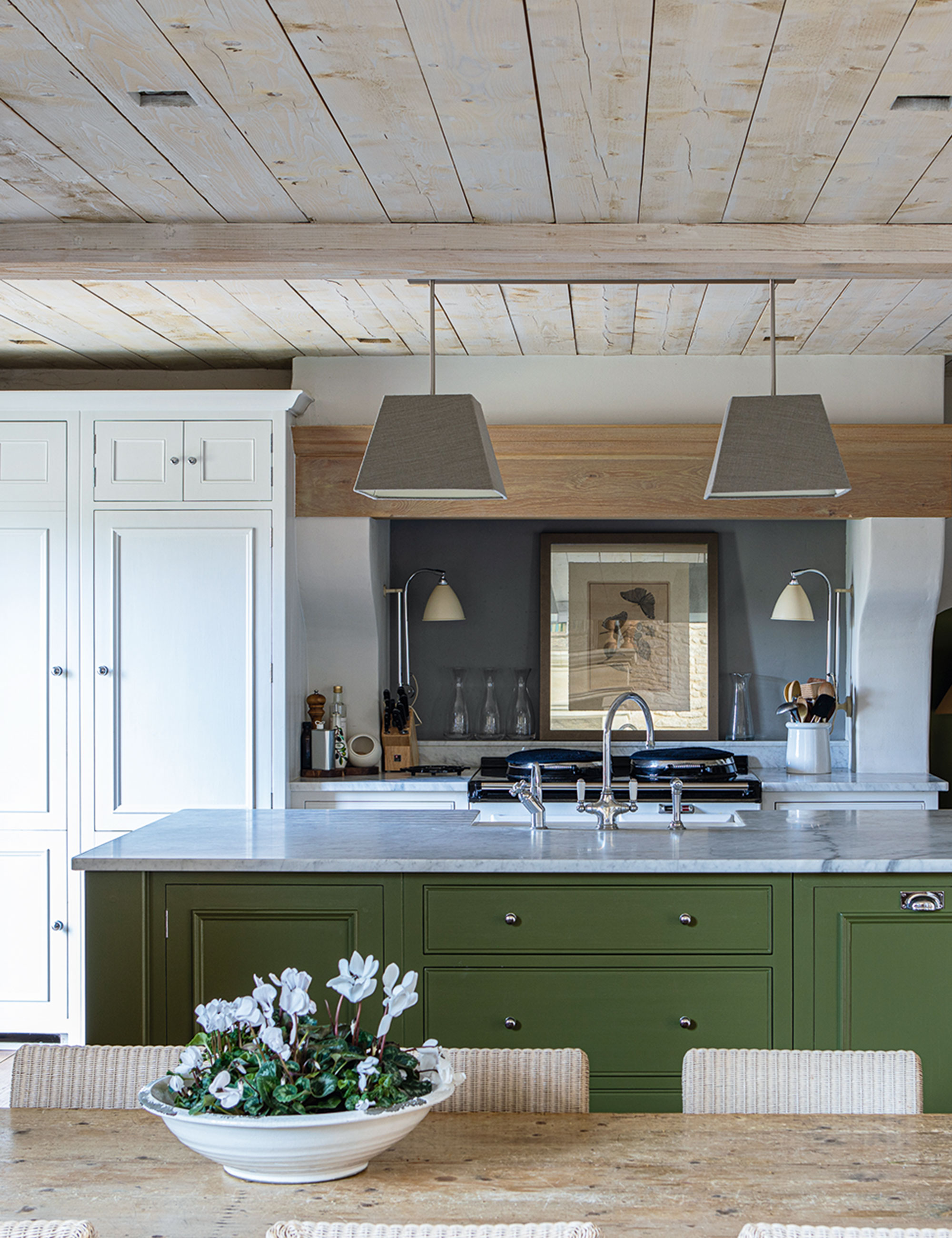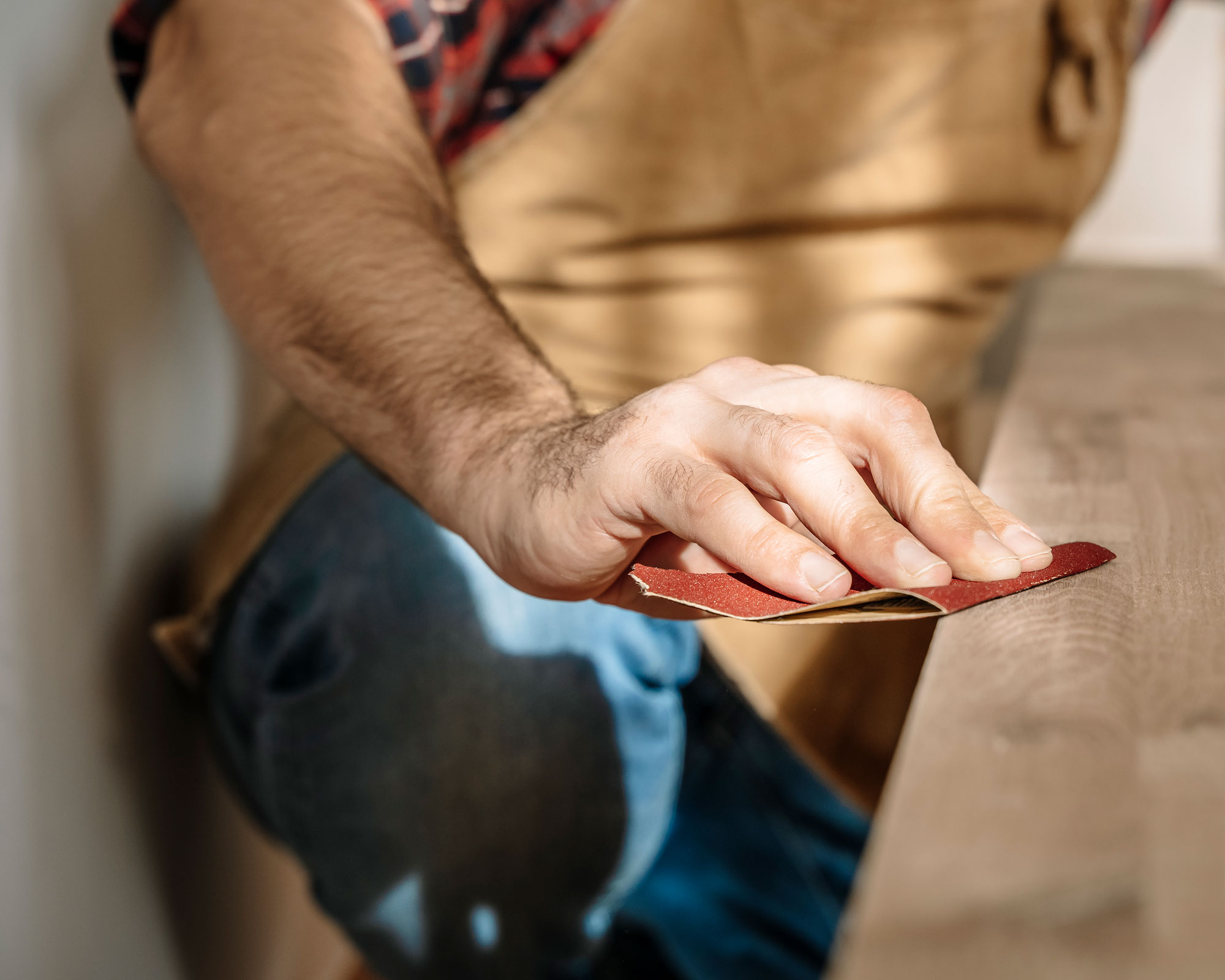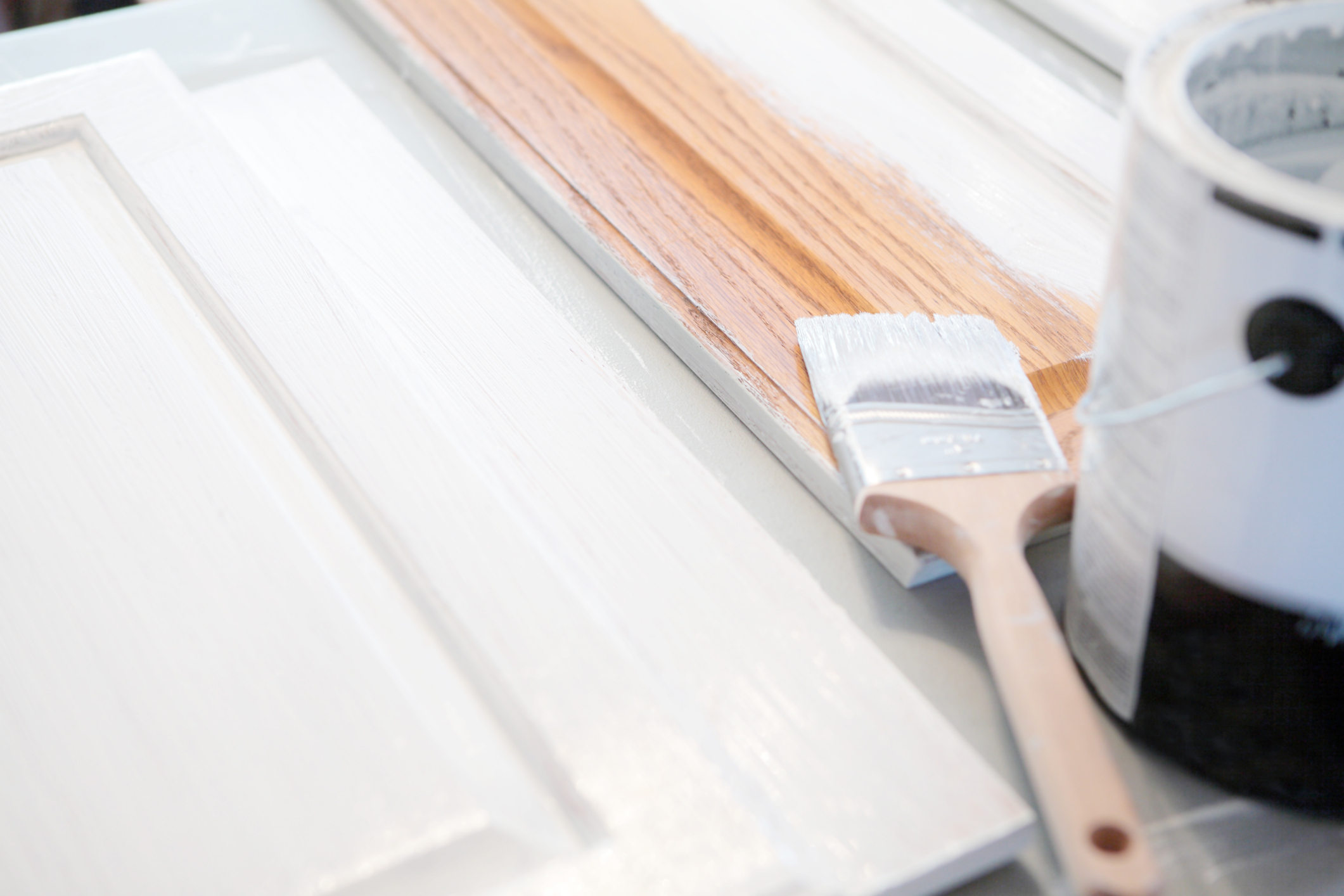
A makeover for cabinets can be a shortcut to a room that feels brand new whether it’s a change of shade, or simply a fresh finish in the original color in place of a tired one. But to ensure the task isn’t onerous, it pays to know the easiest way to paint kitchen cabinets.
Painting kitchen cabinets might be teamed with painting the room, or could be all that’s necessary to transform the space if the cabinets are sound, and the room’s layout is well-planned. Cabinets are a major element of kitchen ideas, so it’s definitely worth investing the time.
But, all the same, no job should be harder than it needs to be, and we asked the experts to explain the strategies that make it simple, fuss-free, and create a pro-level finish.
The easiest way to paint kitchen cabinets
If you’re inspired by painted kitchen cabinet ideas and want to update kitchen cabinets without replacing them then giving yours fresh color can elevate the room.
The good news is that painting kitchen cabinets definitely isn’t a task that’s only the preserve of experienced DIYers. But it is important to note that the easiest way to do the job still does require a little knowhow and our experts have shared this below. Their advice will ensure that giving cabinets a new look is easily achievable and that the results will look professional and last.
Choose the right paint

To make painting kitchen cabinets easy, you must have the right paint for the job. ‘Paint at its essence is a protective coating,’ explains Puji Sherer, VP of color at Miller Paint Company. ‘It is formulated for different surfaces and applications – like interior walls or exterior siding.
‘For kitchen cabinets, it is important to use a paint that is formulated specifically for this application as you will want the paint to be durable enough to withstand everyday use and regular cleaning. Cabinet paint is generally referred to as an enamel that is available in a variety of finishes. Satin and semi-gloss sheens are recommended for washability.’
Interior designer Artem Kropovinsky favors the latter finishes. ‘Kitchen cabinetry should have a durable and cleanable finish like a semigloss or satin finish as this is the most vulnerable area where food and liquid are prone to get splattered all over,’ he says.
Remove doors and drawer fronts
While it might seem quicker to leave doors and drawer fronts in place, removing them will definitely make painting kitchen cabinets easier. It also ensures a better finish.
‘Taking off doors and drawer fronts allows for easier and more even application of paint,’ explains Nick Lopez, founder of LIME Painting. ‘Use a screwdriver to remove hinges and handles,’ he explains. ‘Label each door and its corresponding location to simplify reassembly.’
Clean doors and drawer fronts
If you want to make painting easy, it’s essential to clean cabinet doors and drawer fronts beforehand. ‘Making sure you have a clean surface prior to applying paint or primer is an important part of the prep process and ensures that your paint job looks professional when finished,’ says Puji Sherer. ‘Warm soapy water works well for general cleaning and for areas that require a deeper clean, consider using a TSP solution.’
The procedure is simple. ‘Wipe down all surfaces with a sponge or cloth, paying extra attention to areas around handles and knobs,’ says Nick Lopez. ‘Rinse with clean water and allow surfaces to dry completely.’
Sand surfaces

Sand the surfaces first and painting will be easier. The reason? ‘Sanding can be an important step to ensure proper paint or primer adhesion,’ says Puji Sherer. It’s also key to getting a good finish. ‘Sanding cabinetry prior to painting can help minimize any existing imperfections on the face of the cabinets and therefore be an important step in getting a great end result,’ says Puji.
It’s a straightforward task. ‘Use a medium-grit sandpaper (eg 120 to 150 grit) to scuff the surfaces,’ says Nick Lopez. ‘Pay attention to corners, edges, and any existing finish to create a slightly rough texture. Wipe away dust with a tack cloth or a damp cloth.’
You might be asking if there’s an alternative way to sand since we’re talking ‘easiest’ here. After all, there are liquid sanders and deglossers available. ‘While it can be an alternative, especially for intricate details or hard-to-reach areas, it might not be as effective in leveling imperfections as sanding,’ says Nick Lopez.
As for no-sand paints? ‘While these paints can be convenient, especially for smaller projects, they might not provide the same level of adhesion as traditional sanding,’ says Nick. ‘They work best on surfaces that are already in good condition.’
And note his advice. ‘Even with no-sand or primer-and-paint-in-one products, it’s still a good idea to lightly scuff the surface with fine-grit sandpaper for better adhesion.’
Prime cabinets
There’s another task worth doing prior to painting kitchen cabinets to make the job easier. ‘Most often, it is recommended to prime cabinetry prior to painting for the best results,’ says Puji Sherer.
Why does it help? ‘Priming ensures proper adhesion between the substrate and the topcoat,’ Puji explains. ‘The existing finish on the cabinetry will determine what type of primer is needed. If you are unsure, bring a drawer or door face to your local paint store and they can help you determine the right products for your project.’
But priming isn’t always a must-do task. ‘In some situations, a primer is not required,’ Puji says. ‘For example, if you are doing a light refresh on cabinetry previously painted in latex paint with the same product, you would just need to degloss the surface with a light sand and apply a fresh coat.’
And if you’re tempted to use a two-in-one product, be aware that you might not actually be making painting easier. ‘Some paints are formulated as “paint and primer in one”,’ says Nick Lopez. ‘While these can be convenient, they might not provide the same level of adhesion and coverage as a separate primer, especially on challenging surfaces.’
Apply two coats of paint

Applying two coats of paint doesn’t sound easier, but it will definitely be worth it in both the short and the long run. ‘Two coats of paint are generally recommended by paint manufacturers to make sure that enough dry film thickness is present for maximum durability,’ says Puji Sherer.
‘As a reminder, paint is first and foremost a protective coating that ensures that whatever it is applied to will last as long as possible. Skimping on coats can affect the longevity of a project as not applying enough paint is the leading cause of premature paint failure. Also, applying two coats of paint will guarantee an even finish and color consistency.’
However, if you are tempted by the thought of just using one coat, Nick Lopez advises: ‘Premium paints with high pigmentation may offer better coverage in a single coat.’ And the condition of cabinets beforehand could also save you a job. ‘If the surface is in excellent condition, uniform, and primed appropriately, one coat may be sufficient,’ says Nick.
And the easiest way to apply the paint? Go with the method that feels most comfortable for you. ‘Use high-quality brushes, at Amazon, foam roller, or sprayer for smooth application,’ says Nick.
FAQs
What’s the easiest paint to use on kitchen cabinets?
When you’re selecting paint for kitchen cabinets, it’s important to think about issues such as durability along with how easy they are to apply in the first place. ‘Oil-based paint offers a durable and long-lasting finish with excellent adhesion,’ explains Nick Lopez, founder of LIME Painting. But bear in mind its longer drying time, strong odor during application, and the fact that it can yellow over time, he says.
There’s also water-based (latex) paint available. ‘It dries relatively quickly, has a lower odor, and is easy to clean up with water,’ says Nick. On the downside? ‘It may not be as durable as oil-based paint, and the finish may not be as smooth,’ he says. You might also want to consider acrylic enamel paint. ‘It combines the durability of oil-based paint with the faster drying time of water-based paint,’ says Nick. ‘It provides a smooth finish. However, there are cons. ‘It may not level as well as oil-based paint, and it might be more challenging to work with,’ he explains.
Treated with PaintBlock Technology that seals tape edges for very sharp paint lines.
Removes cleanly and easily for up to 14 days without leaving adhesive residue.
FrogTape Pro Grade Painter’s Tape combines the sharp paint lines of PaintBlock Technology with the value of a traditional blue painter’s tape.
To make painting kitchen cabinets easy, thorough preparation is super important. And don’t forget to protect nearby surfaces so cleanup afterward isn’t hard work either. ‘Masking protects areas you don't want to paint, and drop cloths prevent accidental spills,’ says Nick Lopez. ‘Use painter’s tape to mask off areas like walls, countertops, and floors. Lay down drop cloths to protect surfaces from paint splatter.’







